Potřebujeme váš souhlas k využití jednotlivých dat, aby se vám mimo jiné mohly ukazovat informace týkající se vašich zájmů. Souhlas udělíte kliknutím na tlačítko „OK“.
ASTM D6913-04(2009)e1
Standard Test Methods for Particle-Size Distribution (Gradation) of Soils Using Sieve Analysis (Includes all amendments And changes 5/18/2017).
Automaticky přeložený název:
Standardní zkušební metody pro velikost částic Rozdělení (gradace) zemin Použití sítové analýzy
NORMA vydána dne 1.7.2009
Informace o normě:
Označení normy: ASTM D6913-04(2009)e1
Poznámka: NEPLATNÁ
Datum vydání normy: 1.7.2009
Kód zboží: NS-36976
Počet stran: 34
Přibližná hmotnost: 102 g (0.22 liber)
Země: Americká technická norma
Kategorie: Technické normy ASTM
Kategorie - podobné normy:
Anotace textu normy ASTM D6913-04(2009)e1 :
Keywords:
gradation, grain size, particle size, particle-size distribution, sieve analysis, sieving, ICS Number Code 13.080.20 (Physical properties of soil)
Doplňující informace
| Significance and Use | ||||||||||||||||||||||||||||||||||||||||||||||||||||||||||||||||||||||||||||||||||||||||||||||||||||||||||||||||||||||||||||||||||||||||||||||||||||||||||||||||||||||||||||||||||||||||||||||||||||||||||||||||||||||||||||||||||||||||||||||||||||||||||||||||||||||||||||||||||||||||||||||||||||||||||||||||||||||||||||||||||||||||||||||||||||||||||||||||||
|
The gradation of the soil is used for classification in accordance with Practice D2487. The gradation (particle-size distribution) curve is used to calculate the coefficient of uniformity and the coefficient of curvature. Selection and acceptance of fill materials are often based on gradation. For example, highway embankments, backfills, and earthen dams may have gradation requirements. The gradation of the soil often controls the design and quality control of drainage filters, and groundwater drainage. Selection of options for dynamic compaction and grouting is related to gradation of the soil. The gradation of a soil is an indicator of engineering properties. Hydraulic conductivity, compressibility, and shear strength are related to the gradation of the soil. However, engineering behavior is dependent upon many factors (such as effective stress, stress history, mineral type, structure, plasticity, and geologic origins) and cannot be based solely upon gradation. Note 1—The quality of the result produced by these test methods is dependent on the competence of the personnel performing it, and the suitability of the equipment and facilities used. Agencies that meet the criteria of Practice D3740 are generally considered capable of competent and objective testing/sampling/inspection/etc. Users of these test methods are cautioned that compliance with Practice D3740 does not in itself assure reliable results. Reliable results depend on many factors; Practice D3740 provides a means of evaluating some of those factors. |
||||||||||||||||||||||||||||||||||||||||||||||||||||||||||||||||||||||||||||||||||||||||||||||||||||||||||||||||||||||||||||||||||||||||||||||||||||||||||||||||||||||||||||||||||||||||||||||||||||||||||||||||||||||||||||||||||||||||||||||||||||||||||||||||||||||||||||||||||||||||||||||||||||||||||||||||||||||||||||||||||||||||||||||||||||||||||||||||||
| 1. Scope | ||||||||||||||||||||||||||||||||||||||||||||||||||||||||||||||||||||||||||||||||||||||||||||||||||||||||||||||||||||||||||||||||||||||||||||||||||||||||||||||||||||||||||||||||||||||||||||||||||||||||||||||||||||||||||||||||||||||||||||||||||||||||||||||||||||||||||||||||||||||||||||||||||||||||||||||||||||||||||||||||||||||||||||||||||||||||||||||||||
|
1.1 Soils consist of particles with various shapes and sizes. This test method is used to separate particles into size ranges and to determine quantitatively the mass of particles in each range. These data are combined to determine the particle-size distribution (gradation). This test method uses a square opening sieve criterion in determining the gradation of soil between the 3-in. (75-mm) and No. 200 (75-µm) sieves. 1.2 The terms, soils and material, are used interchangeably throughout the standard. 1.3 In cases where the gradation of particles larger than 3 in. (75 mm) sieve is required, Test Method D5519 may be used. 1.4 In cases where the gradation of particles smaller than No. 200 (75-µm) sieve is required, Test Method D422 may be used. 1.5 Typically, if the maximum particle size is equal to or less than 4.75 mm (No. 4 sieve), then single-set sieving is applicable. Furthermore, if the maximum particle size is greater than 4.75 mm (No. 4 sieve) and equal to or less than 9.5 mm (3/8-in sieve), then either single-set sieving or composite sieving is applicable. Finally, if the maximum particle size is equal to or greater than 19.0 mm (3/4-in sieve), composite sieving is applicable. For special conditions see 10.3. 1.6 Two test methods are provided in this standard. The methods differ in the significant digits recorded and the size of the specimen (mass) required. The method to be used may be specified by the requesting authority; otherwise Method A shall be performed. 1.6.1 Method A—The percentage (by mass) passing each sieve size is recorded to the nearest 1 %. This method must be used when performing composite sieving. For cases of disputes, Method A is the referee method. 1.6.2 Method B—The percentage (by mass) passing each sieve size is recorded to the nearest 0.1 %. This method is only applicable for single sieve-set sieving and when the maximum particle size is equal to or less than the No. 4 (4.75-mm) sieve. 1.7 This test method does not cover, in any detail, procurement of the sample. It is assumed that the sample is obtained using appropriate methods and is representative. 1.8 Sample Processing—Three procedures (moist, air dry, and oven dry) are provided to process the sample to obtain a specimen. The procedure selected will depend on the type of sample, the maximum particle-size in the sample, the range of particle sizes, the initial conditions of the material, the plasticity of the material, the efficiency, and the need for other testing on the sample. The procedure may be specified by the requesting authority; otherwise the guidance given in Section 10 shall be followed. 1.9 This test method typically requires two or three days to complete, depending on the type and size of the sample and soil type. 1.10 This test method is not applicable for the following soils: 1.10.1 Soils containing fibrous peat that will change in particle size during the drying, washing, or sieving procedure. 1.10.2 Soils containing extraneous matter, such as organic solvents, oil, asphalt, wood fragments, or similar items. Such extraneous matter can affect the washing and sieving procedures. 1.10.3 Materials that contain cementitious components, such as cement, fly ash, lime, or other stabilization admixtures. 1.11 This test method may not produce consistent test results within and between laboratories for the following soils and the precision statement does not apply to them. 1.11.1 Friable soils in which the sieving processes change the gradation of the soil. Typical examples of these soils are some residual soils, most weathered shales and some weakly cemented soils such as hardpan, caliche or coquina. 1.11.2 Soils that will not readily disperse such as glauconitic clays or some dried plastic clays. 1.11.3 To test these soils, this test method must be adapted, or altered, and these alterations documented. Depending on the design considerations, a specialized gradation-testing program could be performed. The alterations could require the washing and sieving procedures to be standardized such that each specimen would be processed in a similar manner. 1.12 Some materials that are not soils, but are made up of particles may be tested using this method. However, the applicable sections above should be used in applying this standard. 1.13 All observed and calculated values shall conform to the guidelines for significant digits and rounding established in Practice D6026, unless superseded by this test method. 1.13.1 The procedures used to specify how data are collected/recorded and calculated in this standard are regarded as the industry standard. In addition, they are representative of the significant digits that generally should be retained. The procedures used do not consider material variation, purpose for obtaining the data, special purpose studies, or any considerations for the user's objectives; and it is common practice to increase or reduce significant digits of reported data to be commensurate with these considerations. It is beyond the scope of these test methods to consider significant digits used in analysis methods for engineering design. 1.14 Units—The dimensional values stated in either SI units or inch-pound units are to be regarded as standard, such as 200-mm or 8-in. diameter sieve. Except, the sieve designations are typically identified using the “alternative” system in accordance with Practice E11, such as 3 in. and No. 200, instead of the “standard” system of 75 mm and 75 µm, respectively. Only the SI units are used for mass determinations, calculations and reported results. However, the use of balances or scales recording pounds of mass (lbm) shall not be regarded as nonconformance with this standard. 1.15 A summary of the symbols used in this test method is given in Annex A1. 1.16 This standard does not purport to address all of the safety concerns, if any, associated with its use. It is the responsibility of the user of this standard to establish appropriate safety and health practices and determine the applicability of regulatory limitations prior to use. 1.17 Table of Contents—All tables and figures appear at the end of this standard.
|
||||||||||||||||||||||||||||||||||||||||||||||||||||||||||||||||||||||||||||||||||||||||||||||||||||||||||||||||||||||||||||||||||||||||||||||||||||||||||||||||||||||||||||||||||||||||||||||||||||||||||||||||||||||||||||||||||||||||||||||||||||||||||||||||||||||||||||||||||||||||||||||||||||||||||||||||||||||||||||||||||||||||||||||||||||||||||||||||||
| 2. Referenced Documents | ||||||||||||||||||||||||||||||||||||||||||||||||||||||||||||||||||||||||||||||||||||||||||||||||||||||||||||||||||||||||||||||||||||||||||||||||||||||||||||||||||||||||||||||||||||||||||||||||||||||||||||||||||||||||||||||||||||||||||||||||||||||||||||||||||||||||||||||||||||||||||||||||||||||||||||||||||||||||||||||||||||||||||||||||||||||||||||||||||
|
Podobné normy:
Historická
1.7.2011
Historická
15.3.2009
Historická
1.4.2008
Historická
1.11.2008
Historická
15.5.2010
Historická
1.11.2011
Doporučujeme:
Aktualizace zákonů
Chcete mít jistotu o platnosti užívaných předpisů?
Nabízíme Vám řešení, abyste mohli používat stále platné (aktuální) legislativní předpisy.
Chcete vědět více informací? Podívejte se na tuto stránku.


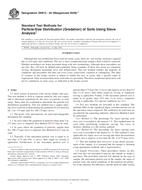
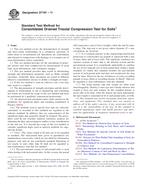 ASTM D7181-11
ASTM D7181-11 ASTM D7263-09
ASTM D7263-09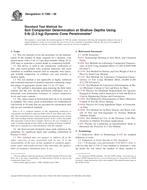 ASTM D7380-08
ASTM D7380-08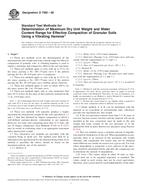 ASTM D7382-08
ASTM D7382-08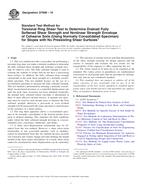 ASTM D7608-10
ASTM D7608-10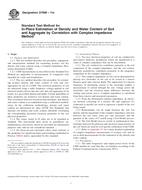 ASTM D7698-11a
ASTM D7698-11a
 Cookies
Cookies
